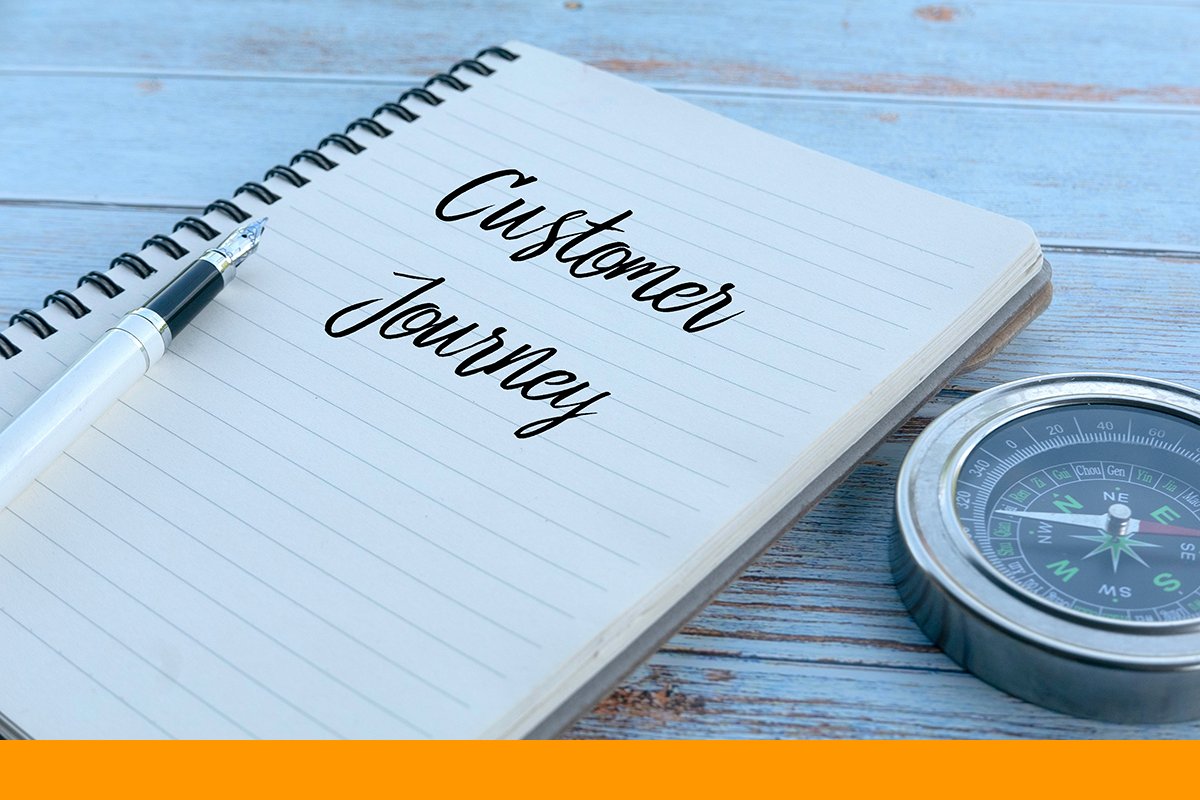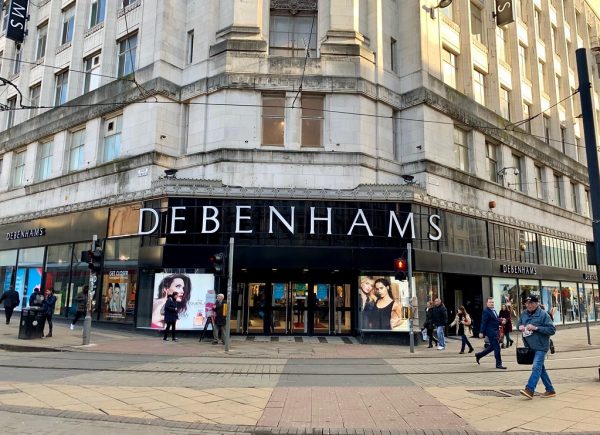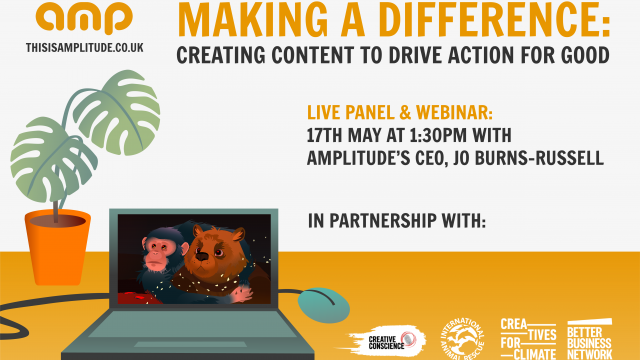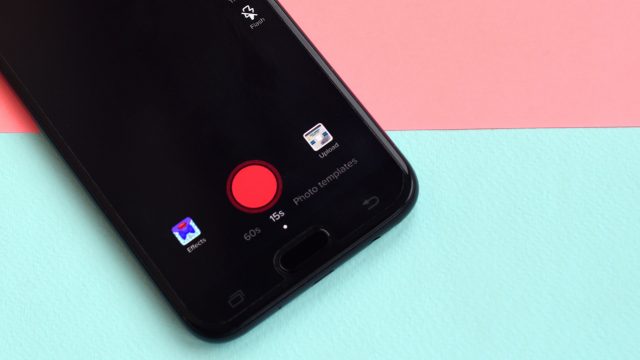Customer Journey – An Introduction
If you’ve been hanging out in the marketing sphere for a while, you’ve probably heard the term “customer journey”. It’s one of those phrases that sounds like self-important marketing jargon (and it sort of is), but the concept behind it is solid. This post is going to break it down. We’ll cover:
- What is a customer journey?
- Why is defining one useful?
- How to define a customer journey
- Simple business example
- Compex business example
- Numbers are your friends
So…
What is a customer journey?
Simply put, a customer journey is a document, file, or piece of writing that details the full experience of being a customer. It follows the experience from before your customer is even aware of your brand, and ends long after they’ve purchased your product.
Numerous marketeers have developed frameworks to explain different stages of a customer journey. AIDA (Awareness, Interest, Decision, Action) is one of the more popular frameworks. It’s good, but in the digital age, many people (us included) want a framework that pays more attention to what happens after the sale. We like the AIDALA model. That’s Awareness, Interest, Decision, Action, Loyalty, Advocacy. Here’s a quick definition of each of those stages:
- Awareness – Customer becomes aware of your brand but isn’t yet interested in learning more.
- Interest – Customer becomes interested in finding out more.
- Decision – Customer makes the decision to purchase.
- Action – Customer purchases your product or service.
- Loyalty – Customer comes to prefer your brand over others.
- Advocacy – Customer champions your brand to their friends and family (and maybe even to strangers online). This feeds back into the Awareness stage.
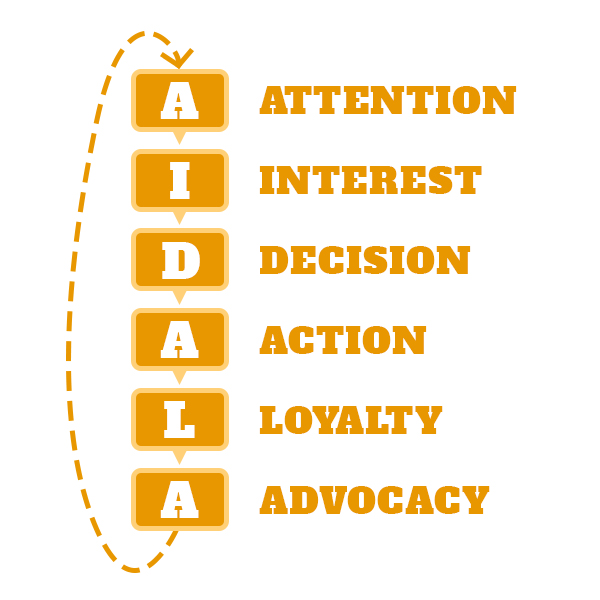 That’s the “what” taken care of. Now for the why.
That’s the “what” taken care of. Now for the why.
Why is a customer journey useful?
The purpose of writing out a customer journey is to better understand why your customers do or don’t buy your product or service. It can help you see the big picture, and help you figure out what’s working and what isn’t. It can highlight areas you need to focus on improving, and might give you new insight into what your customer really wants. This information is useful for businesses at all stages. It can help you increase or sustain growth, can help turn around a declining business, and can help start-ups decide where to invest their valuable time and energy.
Here are a few top-level examples:
- You’re getting a lot of new customers but very few repeat customers. This suggests you’re great at building awareness and interest, but not at fostering loyalty and advocacy. What more could you do to keep customers coming back? Do they know about all of your other products? Perhaps a discount on second purchases, or a newsletter to keep people informed.
- You’re getting lots of repeat business but no new customers. This suggests you’re building lots of loyalty, great, but you’re not generating new awareness and interest. It also suggests your very loyal customers aren’t telling their friends. Maybe it’s time for an outbound marketing campaign? Or time to give out freebies to loyal customers for introducing new people to your brand.
- A lot of people fill up their shopping carts in your online store but very few make purchases. This suggests you’re doing well in Awareness, Interest, and Decision, but something in your purchase process is stopping them taking that last step. Do you require people to make accounts to purchase? Are you asking for too many personal details or not relaying the benefits of signing up effectively? Is it too complex?
How to define your customer journey
To define your customer journey, put yourself in a customer’s shoes. This is one of those things that sounds easy, but quickly gets complicated. We recommend breaking it down into the six stages listed in the AIDALA model, then ask yourself the questions below for each stage. Better yet, ask your customers.
- How do customers reach this stage?
- Why do customers progress from this stage to the next stage?
- Why don’t customers progress from this stage to the next stage?
- What are we currently doing to encourage customers to the next stage?
- What more could we be doing to encourage customers to the next stage?
Be aware that not all customers behave in the same way. You might end up with multiple customer journeys (and that’s perfectly fine). The structure of your business and the type of product you sell will have a big impact on how complex your customer journeys become.
If you’re a start-up business, you might not have customers yet. We recommend talking to people within your target audience to learn about how they might interact with your business in future. Additionally, do some competitor research and try to gauge what’s working for them.
Here are some examples to demonstrate how a customer journey might look. Bear in mind that we’ve worked these up quickly, for demonstration purposes; actual customer journey documents can be a lot longer than this.
Customer Journey Example: Simple Business
Scenario: You sell jewellery exclusively via your website. Your jewellery is designed to resemble board game pieces, so your market is small and niche. All of your promotion is digital, you have an online store, but the product is physical. The product is delivered by courier.
You can see quickly that the customer journey here would be fairly simple, without many branching paths. As you read through, consider the five questions we outlined above, particularly the question asking what more you could do to move people onto the next stage.
Awareness: The product is niche and only available online, so most of your advertising is done via social media, board game websites, and board game magazines. Some people will become aware of your brand through word of mouth, either online (social media) or offline (via friends). If people are interested in finding out more, your website details are easy to find.
Interest: While some people may get more information from magazines or their friends, most will go to your website to learn more. Your site is easy to navigate and the product pages are clearly indicated. Each product page lists all of the information people might want, including delivery details and details relating to refunds and returns. The customer is interested, but not quite ready to make a decision. They seek out product reviews.
Decision: You have positive customer reviews available on each website product page and on social media. Magazines have a positive opinion of you. The “buy now” button is clear on each product page. Your pricing is competitive. Your tone is welcoming and friendly. Seeing these positive indicators, the customer clicks to buy.
Action: The buying process is fast and simple. You don’t ask for any personal information other than what you need to process payment, deliver, and email a receipt. You clearly provide the opportunity to opt-in to have promotional offers delivered by email. The customer completes the buying process and waits for their product.
Loyalty: Your product is great value for money and is delivered on time. They’ve had a good experience, and the customer would be happy to buy again.
Advocacy: Everything has gone smoothly, but the customer only advocates to friends and family. They don’t post about it on social media.
Reading through this, it’s clear that the jewellery business is doing well in five out of six areas. The only place they’re struggling is in advocacy. One idea might be including a note with the product encouraging people to share pictures of them wearing their new jewellery online with a specific hashtag. This would help build awareness, starting the cycle again.
Okay, so that’s a pretty simple example, right? But what about a more complex business?
Customer Journey Example: Complex Business
You run a department store in the middle of a busy town centre. Your range of products is huge. Your audience is made up of people of all ages with all kinds of different interests. All of your products are physical. People can buy in-store, order online for delivery, or order online and pickup in store.
Awareness: Your products range is huge, so you’re advertising online to many different audiences in many different places. You do the same thing in magazines. Additionally, your store has a physical presence on the highstreet, with products placed in shop windows. Some of your customers will spread awareness of your brand through word of mouth. In short. there are many, many ways people could become aware of your brand.
Interest: After becoming aware of your brand, people can find out more in several ways. Some will go to your website or read magazine articles, but a similar number might visit a store, or talk to their friends who already have your products. Your website is likely more cluttered due to your product range being so large. Offline, people may not be able to find the product in-store, or it may be out of stock when they go to look.
Decision: You likely have ratings on TrustPilot, Google, or other review aggregators. As you’re a larger business, you aren’t able to pay as much attention to the nuts and bolts of every sale, so your average reviews might not be as good as a smaller business. You have much more competition (from other department stores and more niche businesses). Offline, the decision to buy may also be influenced by the attitude of your store’s staff.
Action: The buying process may take longer and have more steps to it, simply due to the size of your business. Customers can log in to your website to make future purchases faster, but it means the very first purchase takes longer. In store, your customer may have to queue, and the time of day they visit the store will have an impact on their experience. An overly busy store might stop them buying.
Loyalty: Again, due to the size of your business, it’s harder to pay attention to the nuts and bolts. Delivery time is more likely to slip, as is product quality. Your customer interacts directly with staff in your store, so the nature of those interactions will be a factor in fostering loyalty. As a bigger business, you may be able to set up a robust loyalty scheme, but there will always be some who are sceptical of how much information you’re gathering about them.
Advocacy: Because you buy in bulk, you sell at a discount, meaning people will advocate for you based on price and value for money. Quality isn’t very consistent, so people don’t advocate for you based on the quality of your products.
You can see that this customer journey is much, much more complicated, and there are many more areas that could be improved. In all likelihood you’ll end up with multiple customer journeys that overlap and interact. In this instance, rather than fixing every problem, you’d want to prioritise those you think would provide most value.
Numbers are your friends
While we’ve used very few numbers above, remember that numbers are your greatest ally in getting useful insight out of customer journey exercises. If you have statistics, use them. If you can track falloff from one stage to the next, you can see where you need to focus most. Knowing that 75% of website viewers clicked “Buy now” but only 50% completed a purchase is valuable information. Why did that 25% disappear?
Sound too complex? Want an outside hand to help map out your customer journey? Get in touch, it’s what we do.


